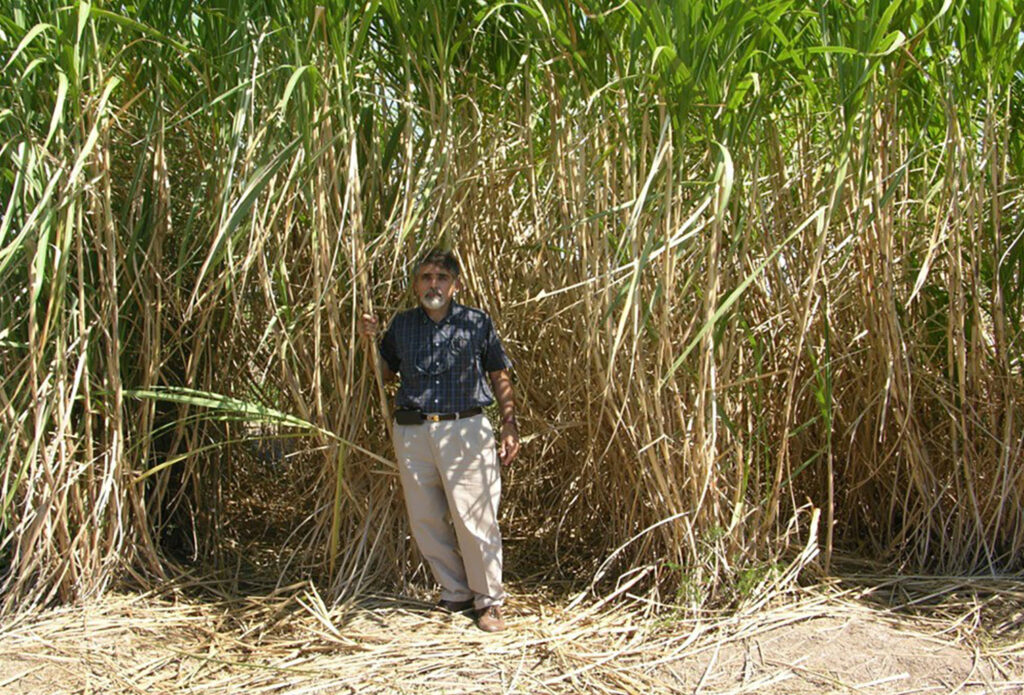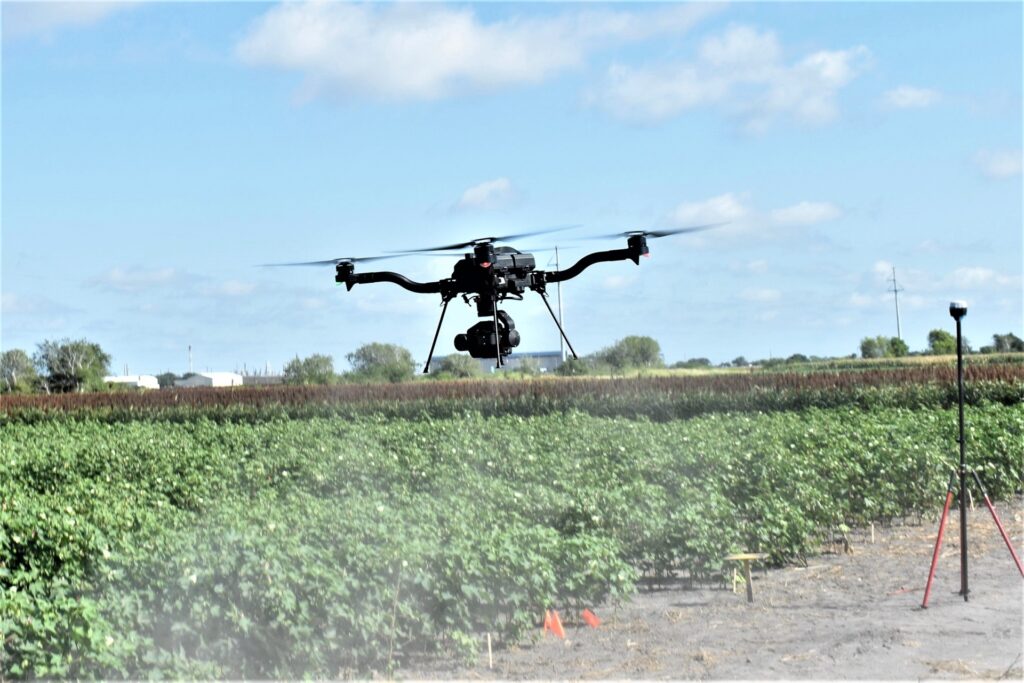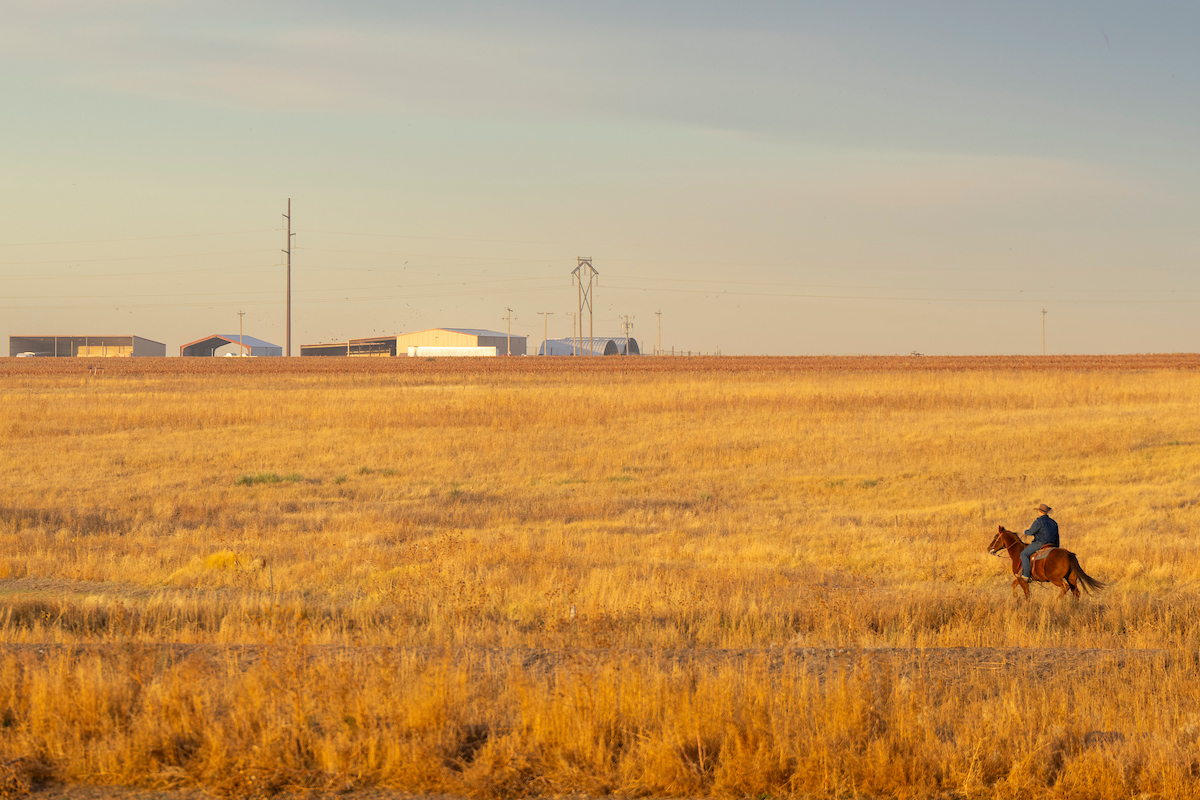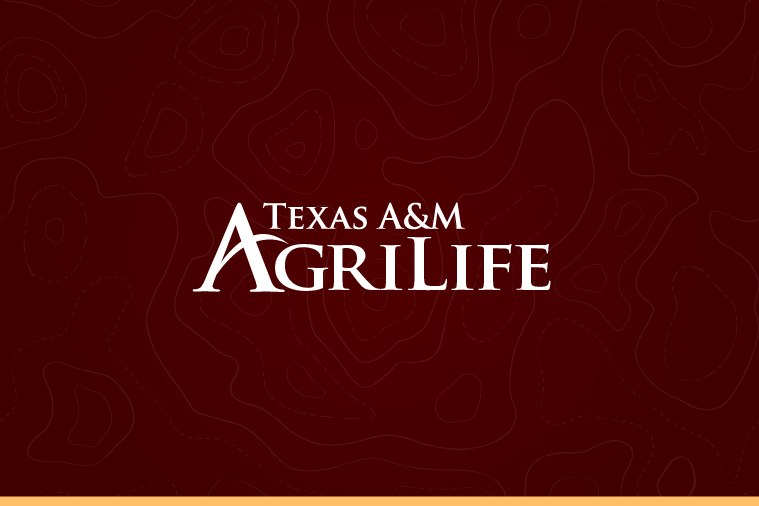Developing biobased cropping systems with both water, carbon resiliency
Texas A&M AgriLife team utilizing remote sensing to assess drought tolerance of energy canes, sorghums
With a push to the future for farmers to grow renewable energy plants, limited water is a challenge. A Texas A&M AgriLife-led team is addressing that issue by evaluating biobased feedstock cropping systems with both water and carbon resiliency.

The Texas A&M AgriLife Research study will use a combination of feedstock germplasm and field production studies to develop a predictive system to identify the best-performing crops and cropping system for renewable energy and biobased products while maximizing carbon capture and retention in the soil. The study is focused on providing solutions for a sustainable bioeconomy.
“It all links back to climate change and increased carbon emissions,” said Mahendra Bhandari, Ph.D., a remote-sensing crop physiologist and assistant professor at the Texas A&M AgriLife Research and Extension Center in Corpus Christi. “We are looking for better products and systems that will minimize the use of fertilizers and other inputs to eventually benefit environmental sustainability.”
The U.S. Department of Agriculture National Institute of Food and Agriculture-funded study titled Bioproducts and Bioenergy from Warm-Season Perennial Grass Feedstock for Low-Input Conditions with Positive Water and Carbon Footprint, includes Bhandari, Jamie Foster, Ph.D., AgriLife Research professor of forage agronomy, Beeville; and Jorge Da Silva, AgriLife Research professor and sugarcane breeder, Weslaco, all within the Department of Soil and Crop Sciences in the Texas A&M College of Agriculture and Life Sciences; and Hua Li, Ph.D., professor and industrial engineering graduate coordinator, Texas A&M University-Kingsville.
Creating a renewable cropping sequence
The project will screen energy cane, switchgrass and perennial sorghum genotypes for water- and nutrient-use efficiency. The most efficient entries will then be integrated with legume crops to create a cropping system.
The team will concentrate on southern growing regions in Texas and begin planting in August on Texas A&M AgriLife properties near Corpus Christi and Weslaco. Da Silva has a long history of breeding energy canes and has developed some of the energy cane cultivars. He will be evaluating the performance of those cultivars with respect to drought tolerance.
Sugarcane has one of the highest photosynthesis capacities of all plant species on the planet, Da Silva said. Energy cane is a sugarcane-derived crop freed of accumulating sucrose on its stems, so it uses its photosynthesis ability to accumulate fiber instead, resulting in high biomass. It also shows resistance to different stresses, which results in a low-input crop appropriate for this project.
Among the material being tested on the project are breeding lines recently created at Da Silva’s project funded by the Texas Governor’s Office Emerging Technology Fund – Biomass.
Bhandari will lead the development of a remote-sensing phenotyping system to assess drought tolerance in feedstock crops. The traditional method of evaluating drought tolerance is labor intensive, he said, but remote-sensing tools can efficiently gather that information and discover traits important to assessing drought tolerance in different genotypes.

The study intends to use RGB, multispectral, thermal and LiDAR sensors that will be mounted in unoccupied aerial vehicles, UAVs.
“We are going to utilize the unoccupied aerial system and develop high-throughput phenotyping to evaluate the performance of the germplasm of energy canes and forage sorghums,” Bhandari said. In addition, the team will also utilize UAV-based measurements and machine learning approach to develop biomass yield prediction models of these crops.
The next step will be integrating bioenergy crops with legumes to help develop a climate-smart cropping system. When legumes are included in cropping systems, the demand for inorganic nitrogen fertilizer may be less, and increased soil cover may improve water infiltration and storage in the soil.
Foster will lead the team in measuring the monoculture feedstock biomass system’s environmental impacts and comparing it with the legume-integrated biomass system. Li will complete a lifecycle analysis of this production system to consider the economics of producing the crops as well as the environmental benefits of the positive carbon and water footprint.
Building the bioenergy research future
Another goal is to train undergraduate and graduate students to work in the bioenergy industry.
“We are collaborating with Dr. Li at Texas A&M University – Kingsville to develop training modules for the students to work on this project,” Bhandari said. “In this way, we are building the next generation of workforce for integrated cropping systems.
“We are looking at both the environmental perspective as well as the economic sustainability,” he said.
Bhandari said the team’s overall goal is to develop an alternative crop production system with a positive water and carbon footprint that is more resilient to future climatic events.
“It is not just evaluating or finding one or two drought-tolerant varieties,” Bhandari said. “The bigger picture is finding varieties that are drought tolerant as well as a cropping system that has a leguminous component in it to supply the fertilizer for the production system, thus, hopefully providing a holistic approach.”





